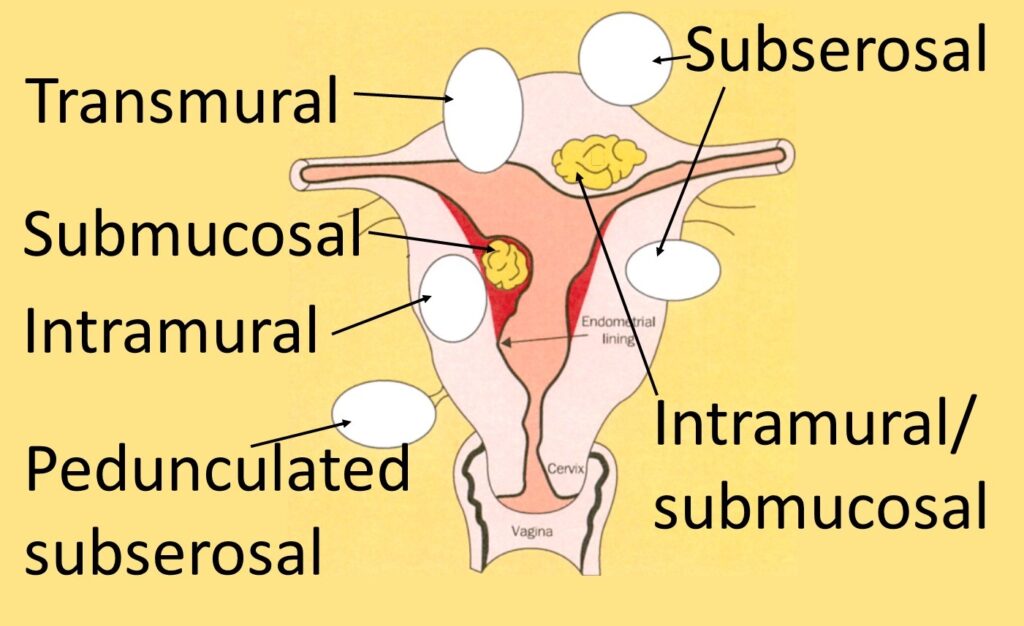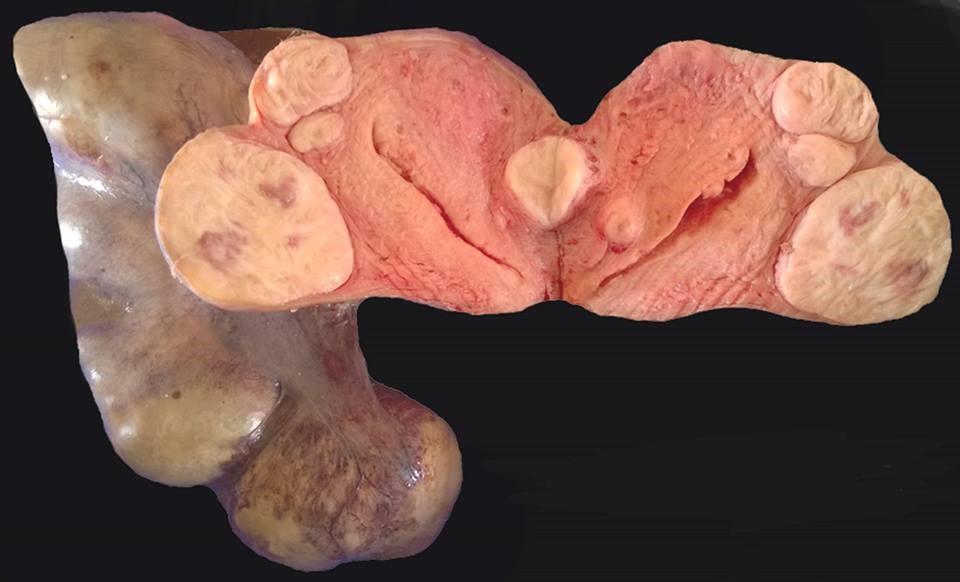Les fibromes utérins, également appelés léiomyomes ou myomes, sont des tumeurs bénignes qui se développent dans ou autour de l’utérus. Bien qu’ils soient fréquents — touchant jusqu’à 70 à 80 % des femmes avant 50 ans — la majorité des femmes atteintes de fibromes ne présentent AUCUN symptôme. Pour environ 25 % des femmes, les fibromes peuvent toutefois altérer considérablement la qualité de vie. Si vous avez reçu un diagnostic de fibromes ou si vous pensez en avoir, comprendre cette affection et connaître vos options peut vous aider à prendre des décisions éclairées concernant votre santé. Toutefois, être diagnostiquée avec des fibromes ne signifie pas nécessairement qu’un traitement est requis, surtout si vous faites partie des 75 % de femmes asymptomatiques.
Qu’est-ce qu’un Fibrome Utérin ?
Les fibromes utérins sont des tumeurs musculaires qui se développent sur les parois de l’utérus. Leur taille varie : certains sont aussi petits qu’un pois, d’autres peuvent atteindre la taille d’un pamplemousse, voire plus. Leur localisation dans l’utérus peut influencer les symptômes observés. On distingue quatre types principaux de fibromes :

De nombreuses femmes atteintes de fibromes ne présentent aucun symptôme. Cependant, lorsque des symptômes apparaissent, ils varient selon la taille, le nombre et la localisation des fibromes. Les symptômes fréquents incluent :
La cause exacte reste inconnue, mais plusieurs facteurs peuvent favoriser leur apparition :
Le traitement dépend des symptômes, de la taille et de la localisation des fibromes, ainsi que de votre projet de maternité. Les options incluent :
En l’absence de symptômes ou si les fibromes sont petits, une simple surveillance peut suffire. Ils peuvent diminuer naturellement après la ménopause. Un suivi médical régulier est recommandé.
Certains traitements médicaux peuvent soulager les symptômes :
Procédures Minimales Invasives
En cas d’inefficacité des médicaments :

Si vous avez des fibromes sans symptômes, une simple surveillance peut suffire. Toutefois, consultez un spécialiste si vous présentez :
Les fibromes utérins sont fréquents et souvent bénins. Cependant, ils peuvent altérer la qualité de vie chez certaines femmes. En cas de fibromes avérés ou suspectés, il est crucial de bien comprendre les traitements disponibles et de savoir quand consulter. Avec un suivi médical adapté, vous pouvez gérer efficacement les symptômes et préserver votre santé gynécologique.
La conisation et et toutes ses variantes : LEEP, LLETZ, SWETZ, CKC, Laser En tant que gynécologue américain exerçant à Paris, j’ai remarqué une particularité
American Hospital of Paris
55 Boulevard du Château,
92200 Neuilly-sur-Seine
+33 (0) 1 46 41 26 99
2025 © Dr Ramírez Zamudio